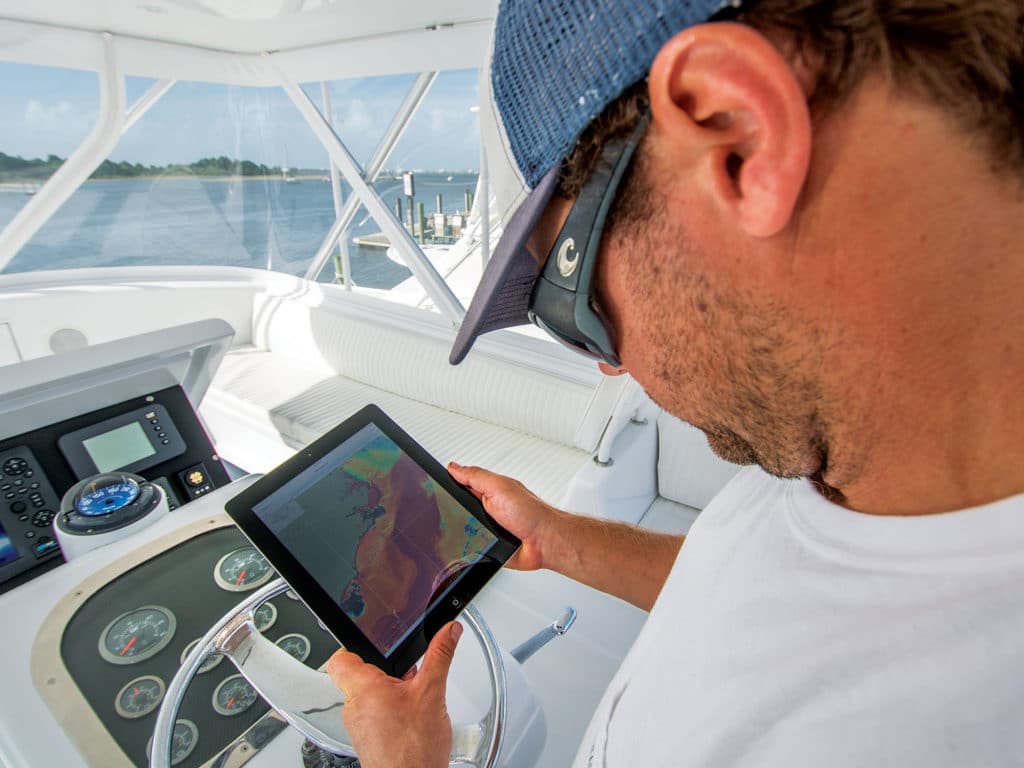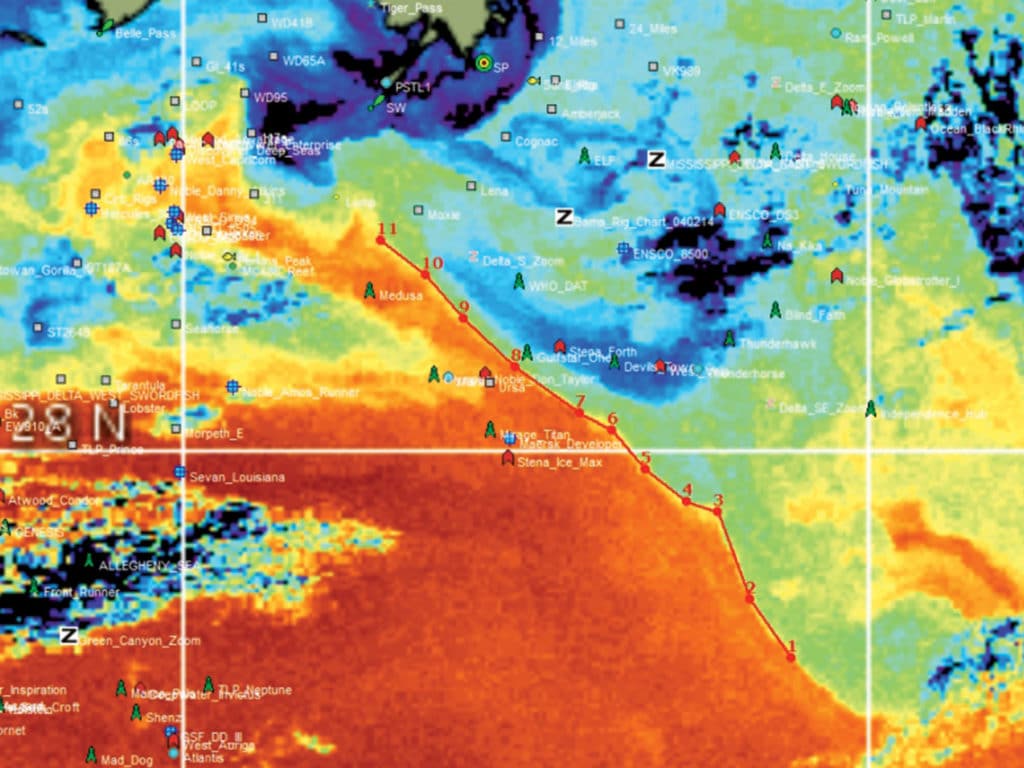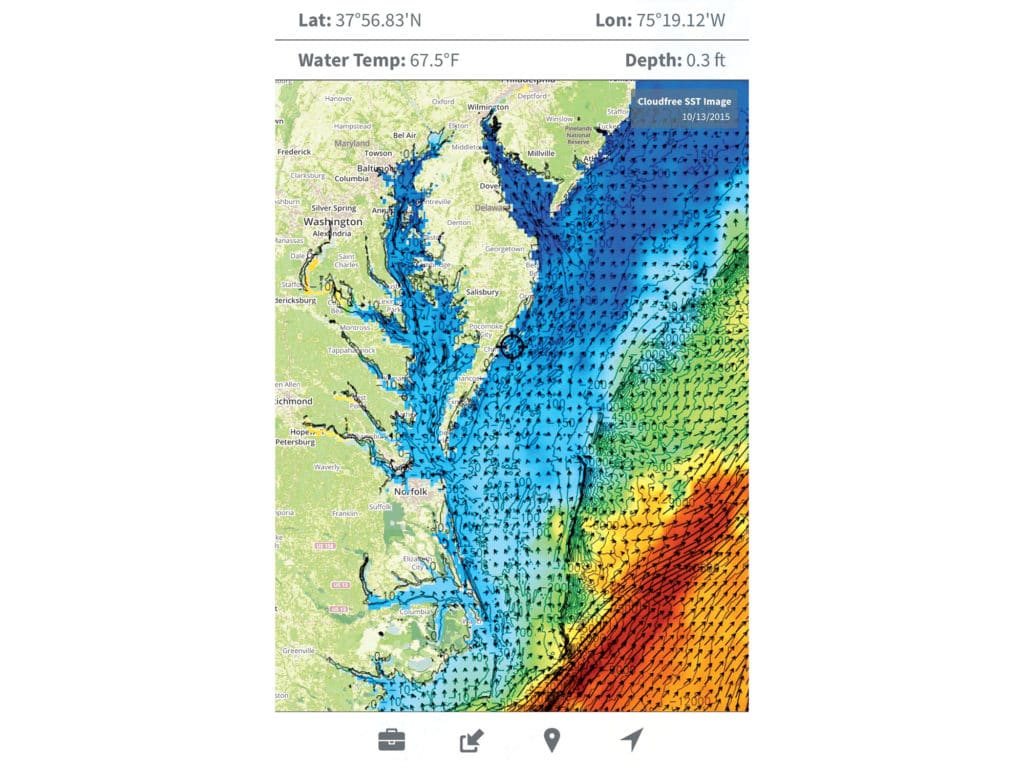
Changing Seas
Mitch Roffer, of Roffer’s Ocean Fishing Forecasting Service (ROFFS), is an oceanographer and is in the business of interpreting satellite-derived data to make tournament-winning fishing plans for his subscribing customers (roffs.com). Sure, free sea-surface-temperature (SST) charts are available online from Rutgers University, NOAA or NASA, but fishermen often don’t dive deep enough into them to make a difference.
Roffer says that you first need to be sure the temperature break is in the right range for billfish — the sweet spot being 75 to 78 degrees. Then, you need to know how long the break has been there.
“A break doesn’t do much for 24 hours,” Roffer says. “It reaches its optimum in about three days. Then, you and I could catch them in a rowboat.” In five or six days, the cycle fades, likely from predator and angler pressure, and it takes a few days to recharge.
Tom Hilton offers his Realtime-Navigator online service (hiltonsoffshore.com), which not only provides satellite-imagery maps in an easily digestible form but allows anglers to plot their own fishing plan and download navigation charts into a tablet to be used offshore.

Secret to Success

Eddy Intel

Good Temperature

Bottoms Up
“Reading the charts is like a hand of cards; when you go out using just one image — say, a good temp break — it’s like an ace in hand. But for a winning hand, you need to rely on other parameters like water color, current and altimetry. Every time you find another favorable condition on that spot, you have another great card in your hand,” Hilton says.
To illustrate his point, Hilton charted a trip for the day I called.
“First, there’s an eddy off the Gulf Loop Current. I like the temperature; that’s two aces. I also found a color break along the eddy, which indicates phytoplankton. Now I have three aces. And the eddy hits the shelf, creating an upwelling right along the line of drilling rigs.That’s four aces in my hand, and I plotted a fishing course right along the confluence of these points. That’s where I’d fish if I were going.”
Although these guys can spoon-feed it to you, with practice, you can get the hang of looking for good temperature breaks and color changes in eddies along shelves, seamounts or oil rigs and be your own man of the hour. But who’s got the time?

FishTrack








